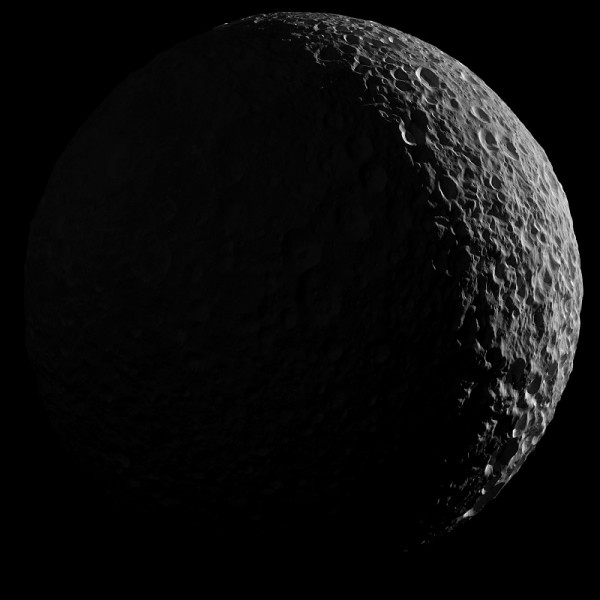By Ana Verayo, | March 20, 2017

The scene is an orthographic projection centered on terrain at 17.5 degrees south latitude, 325.4 degrees west longitude on Mimas. An orthographic view is most like the view seen by a distant observer looking through a telescope.
NASA's Cassini spacecraft arrived at Saturn in 2004 and captured never before seen views of the majestic ring system and its moons such as Titan and Enceladus including Mimas. Now, these latest stunning images of Mimas also known as the "Death Star" moon will be the last from Cassini, as the spacecraft will resume a wider orbit, twice the distance away from the moon, as the mission ends.
Like Us on Facebook
NASA Cassini mission scientists have only carried out several close flybys of the Saturn system in the last 13 years and Mimas' closest approach results in the most detailed imagery ever captured. To be exact, those past flybys occurred at around 50,000 kilometers and the closest approach to Minas was at 41,230 kilometers.
During this mission, the spacecraft was able to captured a series of new high resolution photos that created a stunning mosaic. Using ten images captured by narrow angle views, these are also one of the highest resolution images ever of the frozen world.
In these images, natural illumination can be seen as the sun shines on the moon. Mission scientists also created animation to see the comparison between the mosaics and show further contrast. These also provide a very detailed view of the surface of Mimas, revealing multiple craters and the largest one known as the "Herschel Crater".
After the first Cassini flyby of Mimas in 2010, this massive and famous crater measuring 130 kilometers across was highlighted, dubbing the tiny moon as the "Death Star" moon of Saturn. This crater is named after its discoverer, William Herschel who also discovered Uranus and its moons and Saturn's Enceladus.
This impact crater is also very deep, going for five kilometers down below where some parts can reach 10 kilometers. Scientists say that this impact was caused by a violent asteroid impact that nearly shattered the moon causing massive fractures on the opposite side of Mimas.
For the Cassini mission's final phase, the spacecraft will dive into the Saturn's rings system. The mission is also scheduled to end on mid September this year where the probe will plunge into its death in Saturn's atmosphere.
-
Use of Coronavirus Pandemic Drones Raises Privacy Concerns: Drones Spread Fear, Local Officials Say

-
Coronavirus Hampers The Delivery Of Lockheed Martin F-35 Stealth Fighters For 2020

-
Instagram Speeds Up Plans to Add Account Memorialization Feature Due to COVID-19 Deaths

-
NASA: Perseverance Plans to Bring 'Mars Rock' to Earth in 2031

-
600 Dead And 3,000 In The Hospital as Iranians Believed Drinking High-Concentrations of Alcohol Can Cure The Coronavirus

-
600 Dead And 3,000 In The Hospital as Iranians Believed Drinking High-Concentrations of Alcohol Can Cure The Coronavirus

-
COVID-19: Doctors, Nurses Use Virtual Reality to Learn New Skills in Treating Coronavirus Patients







